To design and develop an electric plane takes skill, wisdom, intelligence, guts, and all the other things you might think of. It also takes a rock-solid process. We use the Peterman Method™ as our map to approach projects large and small. With a project as big as developing an electric plane, we’d need every bit of the process to come out with a successful product. In walking a client through this process on the path to designing an electric plane, we’d want to start at the very beginning to get the best picture possible.
Legacy & Impact
The first step in our process is what we like to call Legacy & Impact. A major component of this that sets the Peterman Method™ apart from others is that we look at the entire lifecycle of the product at the beginning. We go through an interview process, often before completely engaging with a client. If the things we go over aren’t already in place, then our first step is to create and facilitate the company in having these things in place before the product development really gets going.
Who you serve as a company helps define what your products should be.
Ian Peterman, CEO Tweet
The most ideal place to start is in understanding who the client served. Do they serve individuals, airlines, taxi companies, or investors? Who a company serves is important because it helps us understand the goals of the company and therefore the project.
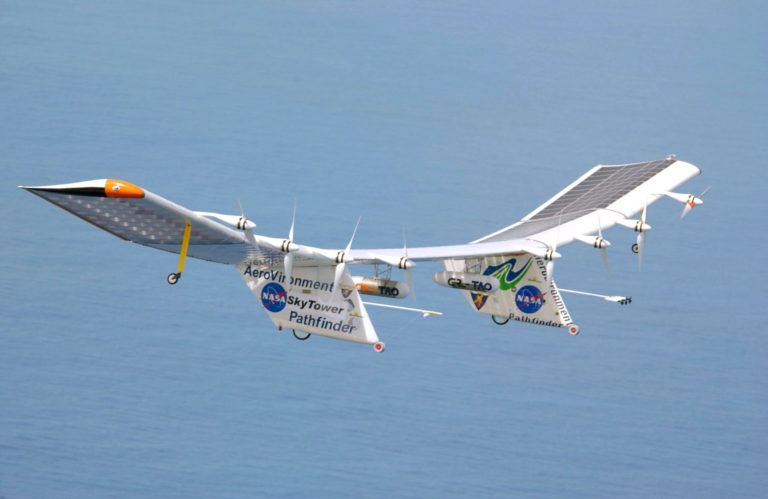
This also tells us if they are a conscious company, or an old-school one aimed at just pure profits and the bottom line. A company can have multiple groups it serves with one product as well, so it’s good to know this up front. We also want to know who the company is, and it’s driving members. Who our client says they are and who others say they are is important.
Company Goals & Vision
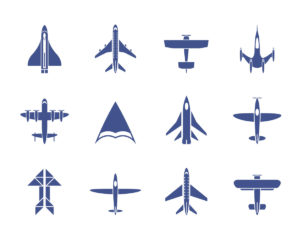
Knowing the vision, targets, and goals of the company is also key. When we partner with a client, we want to make sure everything aligns, both from making sure we work well, but also with ensuring our team aligns to the goals of the company. If our goals, targets, and values are not aligned, everyone will walk away from the project disappointed. Is this a budget plane, cargo, etc.? Do they want to become the new competitor to Boeing and Airbus, aiming for top-dog status in the aerospace industry? Do they want to create a new niche in the market for untapped uses for a plane? Maybe it’s to turn the idea of what a plane is on its head.
This is all to understand the end goal and how this particular product will help with that end goal for the company. Of course, we also need project goals, but those can sometimes be less important initially, especially if not fully defined. With this process of meetings, interviews, and collaborative work sessions, the goal is to build a stronger relationship and an aligned position of strength for the project to move forward with.
Here in this first step we also must know our clients why. This is something we want to ensure is strongly in place and aligns with ours. We look for clients who are aligned with making the world a better place and improving the human condition. This includes economically, socially, and ecologically. We believe a conscious process should improve all three of these areas for everyone involved and ideally the entire world. In fact, this is part of why an electric plane is something we’d happy develop with the right partner.
Legacy is your Impact
A well defined and intentioned legacy can guide a business for generations.
Ian Peterman, CEO Tweet
Lastly, we want to understand the legacy the company is looking to build. While it’s something we’re probably more used to luxury brands mentioning, it’s something every company will leave behind. It can be completely thought through and consciously chosen, or it can be the haphazard result of indecision. As the world becomes more aware of the impact our species has on the planet and our need to be conscious in what we do, this becomes more and more important.

This shift is happening in a way that can’t be stopped and shouldn’t. We aren’t the only ones looking for conscious design processes that will ensure a better legacy for generations to come. We work with conscious companies and work through our conscious product development process, the Peterman Method™.
Knowing what the desired legacy is for a company can help shape the project and what needs to be accomplished. It also provides us a measuring stick by which we can determine success in the long term. The long term could be 5, 10, 50, even 100 years from now. No matter how long, we can use it to know whether we have accomplished our goal.
Is it Feasible?
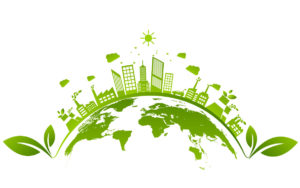
So let’s say our client is a conscious company looking to develop more eco-friendly airplanes that are profitable, who aligns with making the world a better place and improving the human condition, and has the goal of creating a 100 year legacy as the company who made electric planes possible on a commercial level competitive to a 2020 Boeing or Airbus plane. We obviously have what we need to align our team toward that defined end goal and need to move on to the next step in our process, Feasibility & Road Mapping.
Eco-friendly transportation is key to helping our environment.
Ian Peterman, CEO Tweet
To us a feasibility study is not to determine if it can or can’t be done, but what path is the best path to create the results we learned in our first phase that are important to our clients. Sometimes this means redirecting the project into an entirely new vision. But first, we dive into a large ocean of research to understand the possible problems, roadblocks, users, market, and technical requirements. We often start on the fuzzy end and move to the technical.
What type of product is it?
We start with knowing the properties of the product. Is this a mechanical, electrical, or smart product? In the case of our electric plane, this would likely be a smart product, requiring electronics, mechanical components, as well as enough brains to do everything a modern plane is expected to do today and more. Smart products are the most complicated ones, requiring connection to other systems or devices along with everything else.
Market Research
Market research is a MUST if you want a successful product.
Ian Peterman, CEO Tweet
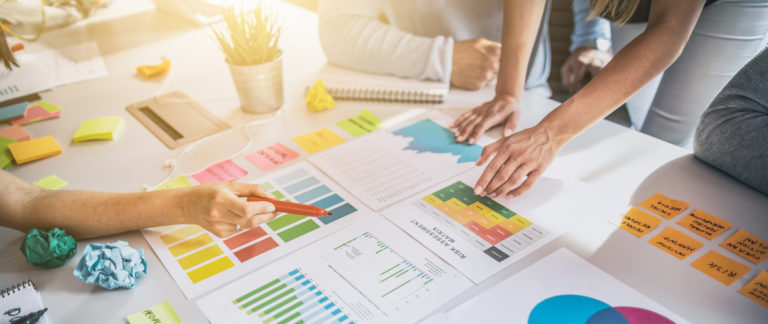
Moving to marketing research, we run through the entire analysis. On a project like this, we’d bring in industry experts and get firsthand information to ensure we had the most up to date metrics to understand everything we could about the market that could inform us. What costs are out there, what is specific to using current fuels, what are headaches the current airlines have with their planes, etc.
Understanding all this creates the ability for us to see openings and shortfalls in what is out there now. It can also allow us to understand untapped or unfixed issues that have been overlooked by the current providers in the market. We can range from quick market research, to what turns to months of research and interviews. Whatever we need to bring to the table to get our needed data.
Users and Customers
Once we have a solid understanding of the market, we look to our users. We believe there are several types of people that fall into the “user” category. With a commercial passenger plane for example, it isn’t just pilots. We have the crew, maintenance, passengers, and cleaning. We also have the airlines purchasers, demonstration flight crew, assemblers, QC inspectors, regulatory, basically anyone who has to interact with the plane in some capacity is a user.
The general categories we have for users are end-user, manufacturing, testing, maintenance. These of course change with each product but give a basic categorization. We want to know what each person who interacts with the product will be doing, expecting, and needing from the product. This process can include interviews, rough prototyping and sketching, reviews with current customers, and more. The goal is to get the clearest picture possible of every touch point of the plane.
Technical Feasibility
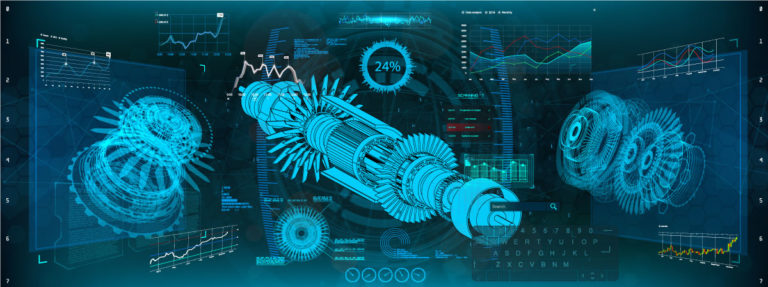
Technical feasibility is the "hard" part
Ian Peterman, CEO Tweet
Now that we have an idea of the market and the users who will interact with the product, we move to the technical feasibility portion. Based on everything we know; we look at what the technological needs are of the product. This means understanding if something is one of two types of products. Groundbreaking or incremental. Incremental products are much easier. There is likely no truly new technology, just a rearrangement of concepts into a new form or a slight adjustment to an existing product.
The difference between your iPhone and the last one is an incremental change. The iPhone launching its first year was groundbreaking. The first rocket was groundbreaking, as was the first one to carry a living creature to space. However, the jump from animals to humans in space was not groundbreaking. Exciting, for sure, but it was just an upgrade of the system that put a monkey in space. I could go on, but back to our electric plane and we’re looking at an incremental product most likely. It’s an improvement on an existing concept. When we make a space elevator, warp drive, and teleportation, those will be groundbreaking.
Our feasibility study will produce the information we need to know how to guide the project. For example, we might say that batteries can’t jump in power density enough, but we still want a clean way to propel our planes, so we look at something like hydrogen. Airbus has been working on this for a while and just announced a bit about it. It’s not a no, and what we call a “yes, and”. There is a path forward to the ultimate goal. If you remember the end goal didn’t say electric planes. We boiled that down to something else far more core to the company. However, for our example we’re going to say we’ve found a battery system that produces the power we need for our plane.
Cost and Supply Chain
Knowing all the technical hurdles and determining a path forward that produces the desired result and is possible is a huge part of the work. Now, however, the rubber hits the road so to speak. Cost analysis. Yes, we CAN do it, but can we do it in a profitable way? This is where we find out. We do things like involve suppliers and build a test supply chain of sorts. Understanding all the components required to put this electric plane into production is the only way to understand what our costs will be. We don’t believe in developing a product and then hoping the supply chain can handle it or meet our cost expectations.
We do this in the beginning so we can solve immediate roadblocks that could stop our project from being successful. Involving supply chain experts, vendors, and suppliers ensures the product can be produced and for what costs. This allows us to look for alternatives should costs come back too high, or if there is enough profit fit in additional features that weren’t initially thought to be possible. Yes, undercutting the competition profitably is a product feature.
Critical Decision Point
This is one of the few critical decision points in the process. If there isn’t a viable solution that meets the market needs, user needs, technical requirements, and the cost targets, then this is where the project can end before it costs too much time or money. Remember, we haven’t actually developed or designed anything in hard line. We’ve walked through the process of doing it with all the experts and filled in all the pieces of the puzzle needed to make it happen. However, this means that at the most we have a few simple prototypes of specific parts of the product, some early stage concept artwork to share what the concept is and have spent time and money researching the project. This would likely be a 3-9 month process at most.
Quite a bit better than building a functioning prototype that was amazing but then found out could never be manufactured as needed.
We take all this information, when we get the green light, and build an in-depth road map to get from cradle to grave or cradle, depending on the project. Our road map is the guide we follow to ensure we’ve crossed every t and dotted every i. It can evolve as the project moves forward and new information comes in, but its end goal never changes and allows us a clear path forward that everyone buys into. Our clients know where we are every step of the way. It’s like letting everyone see the GPS while we drive together to our destination. We remove uncertainty and doubt and replace that with power and grace, along with a true partnership for success.
Lifecycle Planning and Circular Design
Product lifecycle planning and management is key to moving toward circular design and economy's.
Ian Peterman, CEO Tweet

Involved in this road mapping process is lifecycle strategy. We look at every part of the process; supply chain options, design, intentions, and more. We do this to ensure that the entire lifecycle is accounted for. Part of the Peterman Method that makes it unique is our focus on defining the entire lifecycle of the product. In this case, our electric plane has as much of a lifecycle as any other product. The difference is it’s more expensive and sometimes easier to recycle or move to a next phase of its lifecycle.
What happens to it when it reaches end of life? What is its life expectancy? If one crashes, how is that dealt with? What happens when a door handle breaks? Part of the lifecycle is also maintenance. Can you, on what parts, and how often all must be thought of. With airplanes there are inspections and regulations that must be constantly kept up with. Making it easier for airlines and regulators to see these things could save hundreds or thousands of hours a year.
Let’s say that modularity or upgrade potential was an area that came up. Think of how Tesla can update their cars to go faster and further with just some over the air updates. Maybe that is a possibility our client wants to make a reality with this new electric plane. That is part of its lifecycle strategy to keep its value and usability up.
Walking through these first two steps is a process that takes time and true empathy and interest with our clients and the users of the products. The result, however, is the ability to develop amazing products. This process allows us to meet the different needs of every shareholder in the project, from end-users to investors. The Peterman Method™ focuses on these two first areas as key cornerstones to developing products. We believe this helps make a product worth investing in and provides a better future for us all.
Your Next Steps
Related Conscious Design BLOG Posts
What’s a Feasibility Study?
A feasibility study is a very important step in making sure a product will be successful. I break down what they are and why they matter.
What it Takes to Develop a Smart Product
As the Internet of Things has grown over the years, smart products have become a pretty hot item. Many people have product ideas for turning a “dumb” product into a “smart” one. It’s great, I love that we are improving our tools and gadgets in so many new and interesting ways. Technology is something that amazes me, and will probably continue to do so for the rest of my life. For a lot of people, it might seem like a fairly simple task to just add some electronics to a product and make it smart. You should understand what you or your business will need to developing such a product. You might have gotten an idea about what it really takes in our post a couple weeks ago Time, Budgets, & Luxury, but I’d like to dive more into exactly what it takes to create a smart product. There is a lot of time and effort that is beyond what low-tech products need to become a reality. For us, “smart” is anything that contains electronics that can connect to other electronics, so wi-fi, Bluetooth, NFC, USB, etc, usually there are sensors or other input points that collect data to be shared with other devices. Putting a motor into a mower doesn’t make it “smart”. Putting a computer on board with internet access, connected to an app would make it “smart”. A “smart” product doesn’t always have to touch the internet either, there are many closed circuit smart devices. IOT (internet of things) products MUST touch the internet however. In no particular order, here is a breakdown of everything that goes into developing a “smart” product. This will give you an idea of what you can expect if you choose to dive into this process. Disciplines required Most “dumb” products can get away with just an Industrial Designer or Mechanical Engineer. Both work, but you can read more about the differences in our post3 Things You Should Know About Designers & Engineers. No electronics means no coders, no electrical engineers, and many others. If you are working with basic electronics, such as motors, switches, etc, you can sometimes avoid getting an electronics person involved. BLANK Ian Peterman, CEO Tweet There are many mechanical side people who can make that happen. Now, if we’re creating a “smart” product, we will need these: App Design & Development Electronics Design Electrical Manufacturing Web Design & Development There are possibly a few others depending on how big you go, such as database development, but these areas would cover most of the work needed to get the project done. Time It can easily double the amount of time to design and develop a new product by adding in electronics that would make a product “smart”. Does this mean it would take longer on a calendar? Not necessarily. When we can, we prefer to do side-by-side development of the mechanical and electrical. This ensures both sides work together and keeps the timeline shorter. The collaboration between mechanical and electrical can really build some synergy with the project. The result is that issues can be caught earlier, avoiding them from popping up super late in the process where it’s harder and more expensive to fix. Cost BLANK Ian Peterman, CEO Tweet Double the time, at least double the cost. Electronics are usually more expensive to prototype. The benefit is the manufacturing on the back end makes super components, even fully custom ones. These products also sell for a higher premium than their “dumb” counter parts. Planning Working on more complex projects such as this involves a lot more planning and project management. Here at the Peterman Design Firm, that is one of our core competencies. You need to make sure the firm you work with has experienced Project Managers on its team. They also need to be able to handle the load required to bring such a product to life. BLANK Ian Peterman, CEO Tweet Network We’ve talked about how important your network is in our last post Building Your Network for Success. This is a place where it really matters as you need so many resources to get the project completed. If you are working with some of the very large and expensive firms out there, they probably have such a large in-house team they can handle most things, but you pay for it. Medium sized firms often still have the network and don’t do everything in-house. Small ones and freelancers don’t always have the network you need and are often still building them. The caveat of course is if they have been in business for 20 plus years, they probably have a good network. Feasibility Study BLANK Ian Peterman, CEO Tweet I put this here just because people like to skim, and this is a key part. Feasibility studies should never be skipped with products in this category. A feasibility study is very important to do at the beginning of your project. The firm you choose to use should be able to offer this service by itself. Don’t commit to full development until you know it can be done. A complete feasibility study from the Peterman Design Firm will give you cost expectations for the entire project, time frame, potential issues, project duration estimation and breakdown, and some market information on competitors. If you’d like to learn more about feasibility studies, check out our post What’s a Feasibility Study? When you have a great idea for a “smart” product, it’s at least worth getting a consultation on the idea. If your budget can handle it, a feasibility study would be valuable. Then if it looks good, invest the money. The great thing with “smart” products is that they are in high demand. Plus we seem to be on an exponential growth with them. For now, it’s a trend I feel will stay with us for a while, if not permanently. Your Next Steps Developing Smart Products What does it take to develop a smart product?
5 Tips for Market Research & Analysis
Wondering about Market Research & Analysis? This will give you a few tips on what it is and how to start your own research.


